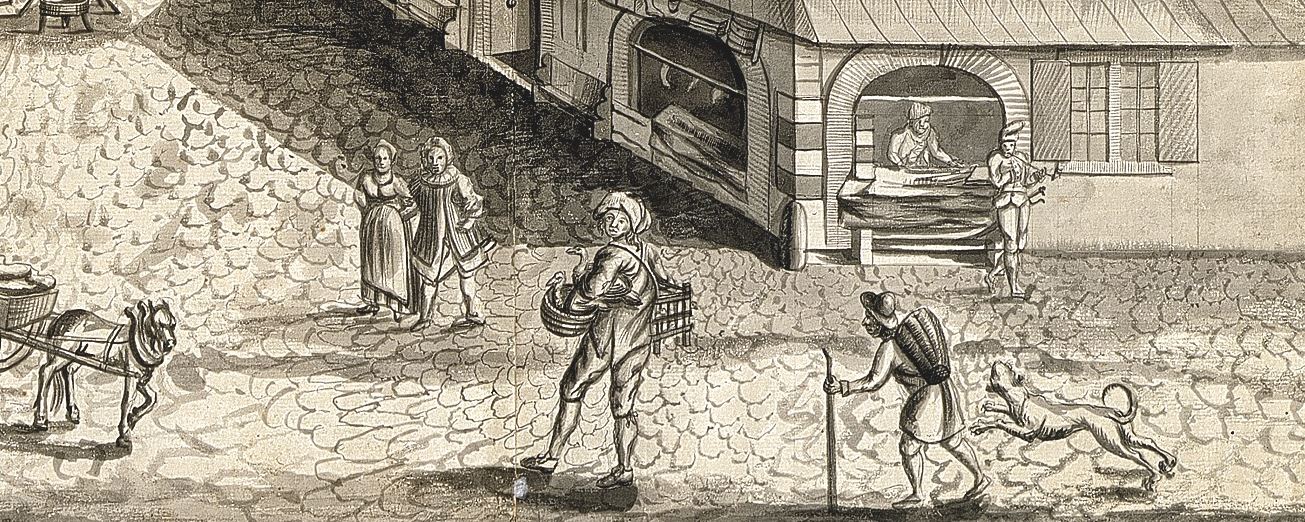
Fischmarkt (second quarter of the eighteenth century) – picture detail
In recent years, much effort has been directed towards an integrated and more comprehensive view of economic change in early modern Europe, not least by exploring intersections between concepts like the so-called industrious revolution, consumer revolution, retail revolution, and communications revolution, and linking local and global histories. It seems that already before industrialization kicked in, the circulation of consumer goods, information and people intensified, marketiziation may have become more pronounced.
"Printed Markets" focusses on one device that helped an urban community to organize itself in these settings: the intelligencer or advertisement paper. Our case study is the weekly Basel Avisblatt, in which request and offers for goods and services, property and jobs were posted, and in which also news of different kinds, weekly prices of victuals, and yearly vital statistics were published. All 6391 issues that were printed from 1729 to 1844/45 are preserved and made use of in the project.
"Printed Markets" uses digital tools and contributes to the further development of these tools within the framework of Digital History, which can then also be used in other projects for the indexing of newspapers and, beyond that, for very different digitised source corpora. It also explores exemplary ways to employ data science methods in historical analysis.
The project aims to provide a database of several thousands of advertisements, from which structured datasets and long-term data series can be derived, on such diverse areas as the goods market, the labour market, the property market, transport and travel, lotteries as financing instruments, or demographics (from birth, marriage and death announcements).
"Printed Markets" will pioneer studies of these areas and invites future research to make use of the source and our data. The dense and long-running records of the Avisblatt make for excellent case studies on how society and economy transformed during the transition period of the "Sattelzeit", as it reflects myriads of ways to organise economic exchange, to interlink persons of complementary interests, to spin the socioeconomic web.
